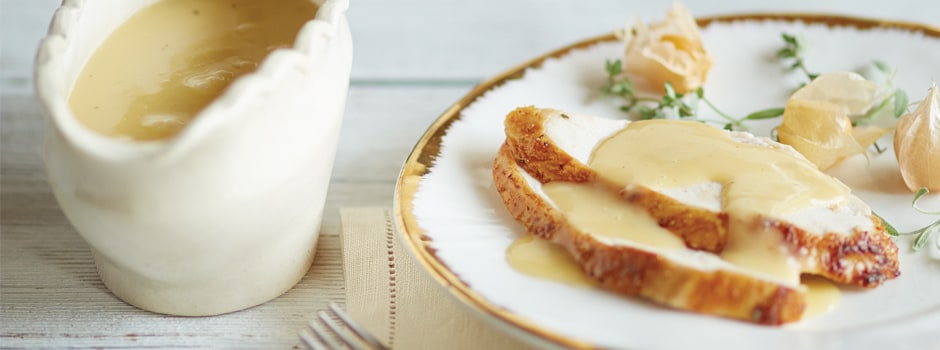Preparation and Brining
Start by cleaning your turkey. If you're cooking a whole turkey, remove and set aside the giblets. Rinse your turkey or turkey pieces in cold water before patting it dry with paper towel. Regardless of how you cook your turkey, you'll want to brine it — soaking it in a salt water mixture — first to lock in moisture. And adding herbs and spices — like bay leaves, black pepper and coriander — to your brining mixture also allows you to infuse your turkey with subtle flavor. Immerse your turkey in the brining mixture and allow it to soak, refrigerated, for 24 hours.
Choose Your Cooking Method
You have a few options for cooking your bird. Roasting and braising involve cooking your turkey in the oven, while smoking means cooking your bird on the grill.
- Roasting makes it easy to cook a whole turkey, with or without stuffing, in the oven. Set your turkey in the pan with the seasonings of your choice — chunks of onion and carrot and a few bay leaves work well — cover the pan with aluminum foil and bake. Partway through cooking, remove the foil — this allows the skin to get crispy and golden brown.
- Braising is ideal if you don't want lots of leftovers — you'll typically braise turkey in pieces, instead of as a whole bird, so it's easier to plan your portions. Arrange the turkey pieces in the pan along with chicken or turkey broth, onions, garlic, mushrooms and any other veggies or seasonings of your choice and bake, covered, until the turkey is cooked through.
- Smoking offers a more flavorful option. Use a pouch of foil-wrapped hickory food chips to infuse your turkey with flavor and cook your bird over indirect heat on the grill. This method is perfect if you live in a warmer climate and don't want your oven running for hours or you simply want an alternative to traditional roast turkey.
No matter which method you choose, make sure you follow food safety regulations. Use a thermometer to cook the turkey to an internal temperature of 165 degrees Fahrenheit in the breast and stuffing. If you're stuffing your turkey, do so immediately before it goes into the oven to avoid food-borne illness.
Make Delicious Sauces
Save the turkey juices left over after roasting or braising to make show-stopping gravy. To make it the healthy way, collect all the liquid — with any chunks of vegetables or seasonings removed — and allow it to solidify in the fridge. As the liquid cools, it will separate into two layers — an upper fat layer, which you can easily scrape off and throw out, and a darker fat-free layer that you'll use to make your gravy. Use your Vitamix machine to make stress-free gravy in roughly half an hour, using the cooking liquid in place of some or all of the turkey broth. You can also whip up a delicious and decadent orange cranberry sauce to top your turkey.
If you're feeling more adventurous, pair your turkey with ginger beet puree instead of traditional gravy or cranberry sauce. This works particularly well with the stronger flavor of smoked turkey. For a savory-and-sweet option, serve your bird with blackberry spice sauce.
Related Articles

Family First: Tips for Hosting Your First Holiday Gathering
Take a deep breath, follow these pro tips for your first holiday gathering and prepare to enjoy a successful feast.

Meat-Free Alternatives to Traditional Thanksgiving Recipes
Experiment with seasonal produce and rich-tasting ingredients, like nuts, for hearty meat-free alternatives to traditional Thanksgiving recipes.

5 Tips for Cooking with Cranberries
The cranberry is a versatile fruit, tart by nature, but easily sweetened, and tasty both ways.
